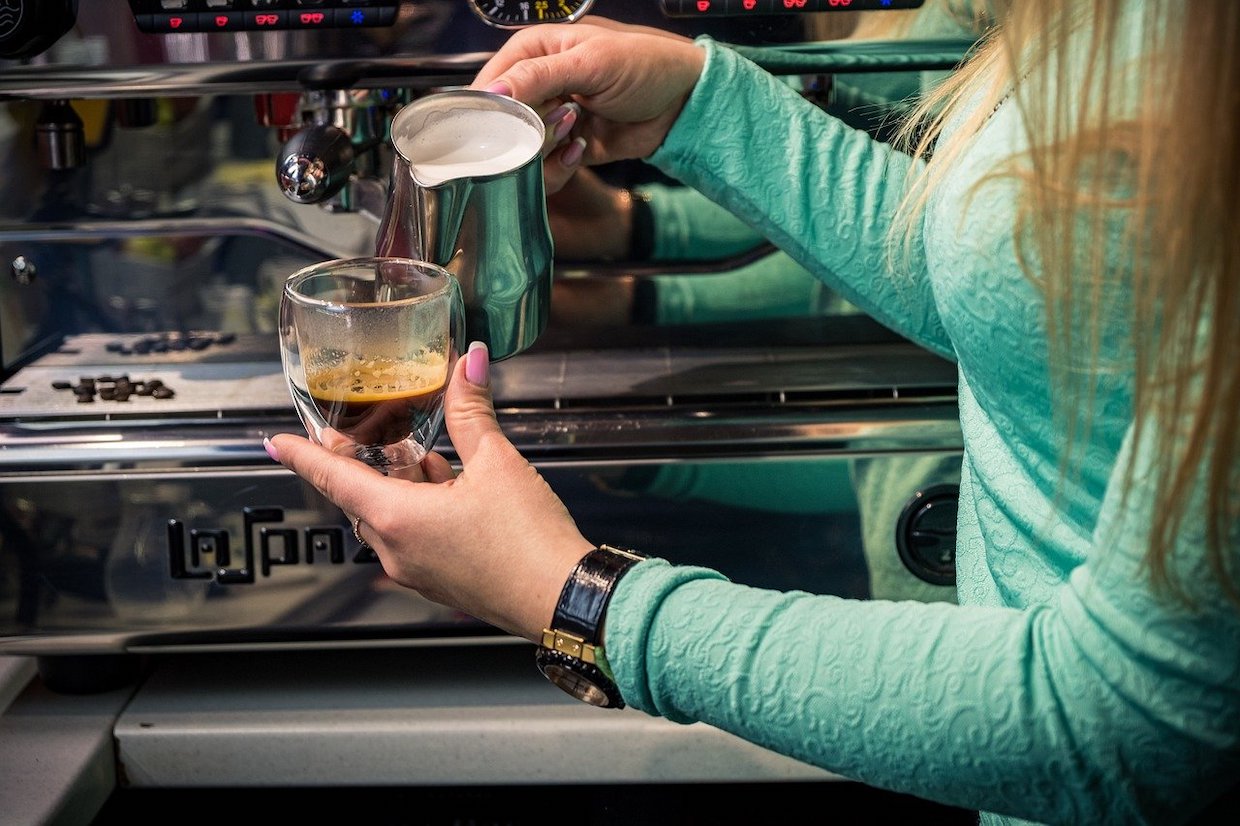Following post-lockdown rebounds, United States coffee shop sales volumes have plateaued in recent months below pre-pandemic levels, according to a new report from the Bank of America Institute.
The report draws upon a Bank of America transaction indicator reflecting some 10 million individual coffee shop transactions per month.
It suggests the current lag in sales volumes (in numbers of transactions), as compared to pre-pandemic levels, follows roughly in step with Americans’ transition to working from home, which also have leveled off in recent months.
“The logic is simple — people tend to grab a coffee during their morning commute and at other times during the day when working in the office,” the report states. “If they are working from home their demand for coffee shop products will likely decline – while they may substitute demand for coffee close to the office with demand for coffee close to home somewhat, on balance they are less likely to go out for coffee if they can get some at home.”
Related Reading
- USDA Report: Coffee Consumption Booming in China as Domestic Production Slows
- More Americans Drinking Coffee and Venturing Outside the Home, NCA Report Shows
- Coffee Brands Nearly Doubled Their Sustainability Claims in the Past Decade, Report States
The report added that volumes are also likely to be affected depending on whether the coffee shops sell food, stating, “people are more likely to make their own breakfast, lunch and snacks when at home.”
The Bank of America Institute is a think tank launched by BOA earlier this year to provide insight on macro-economic trends.
For the coffee shop report, transaction data was measured against an ongoing survey project from the National Bureau of Economic Research. That survey found that early on in the pandemic, more than 60% of paid workdays took place at home as opposed to the office. While many people have since returned to offices, the survey’s most recent report, in June, suggested one-third of American workdays still took place at home.
“Taken together, this data implies the increased prevalence of remote work is persisting and shows relatively little sign of rising back to the ‘old normal,’” the report states.
The report notes some interesting regional differences in coffee shop sales volumes that may affect pandemic-driven housing trends, including volumes exceeding pre-pandemic levels in California, Texas and North Carolina, and lower volumes in Florida and New York. In New York City, volumes were especially lagging in office-dense areas.
Does your coffee business have news to share? Let DCN’s editors know here.
Nick Brown
Nick Brown is the editor of Daily Coffee News by Roast Magazine.
Comment
1 Comment
Comments are closed.








I agree with this story to a point, the one glaring exception is Starbucks which today announced that it beat anticipated revenues and earnings for the quarter fueled by its cold coffee offerings. Although I believe this is likely, their increase is also likely in line with the intent of this article. As at-home work rises, people still need a place to hold in-person meetings. Starbucks, which has always benefitted from its reputation as a universally recognizable meeting place (online dating meetups, outside sales offices, etc.) is now benefitting from being a mutually recognizable location for informal business meetings and “after-work” casual gatherings. This further degrades the ability of small chains and independent stores to fully rebound.